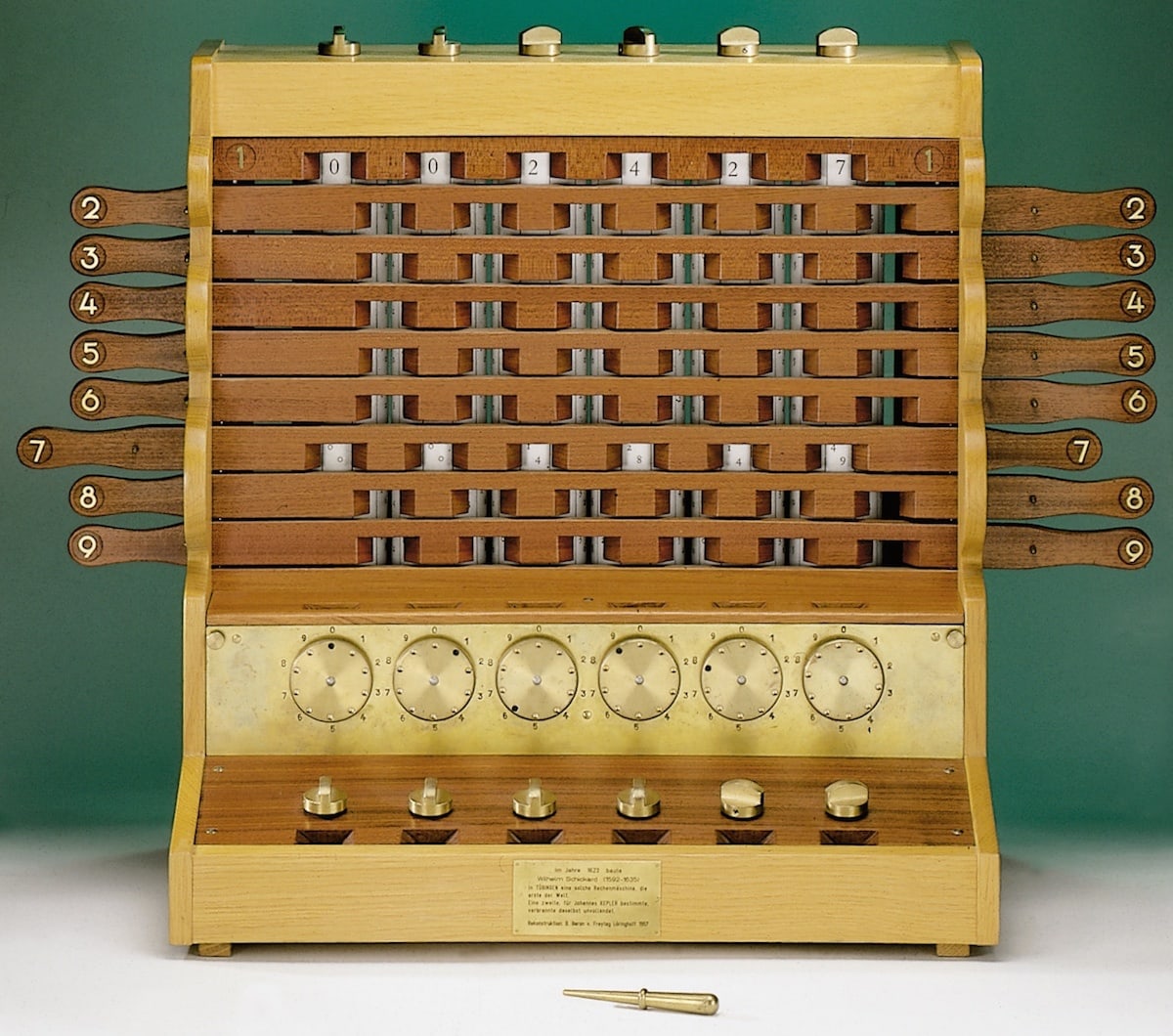Wilhelm Schickard’s life overlapped that of John Napier, inventor of logarithms and Napier’s bones, by a quarter century. Born in 1592, Schickard’s birthplace of Herrenberg and his alma mater of nearby Tübingen, both now in Germany, put him in the midst of a clockwork revolution: the surrounding area was famed for its clockmakers, and the technology of mechanical clocks was advancing by leaps and bounds.1,2,3
Schickard himself studied languages and theology, though he was also an excellent engraver in wood and copper and a keen mathematician. Those latter two talents combined to win him commissions for illustrations and mathematical tables from Johannes Kepler, one of the most prominent and influential astronomers of the day.1

All of this came together in Schickard’s invention, in 1623, of a device he described in a letter to Kepler and that he called the Rechenuhr, or “calculating clock.” It was, in essence, the first ever practical mechanical calculator.
Schickard’s ungainly machine placed a set of Napier’s bones atop a mechanical adding machine. A set of six small windows in the lower part showed a running total, to which the user added or subtracted units, tens, hundreds, and so on by turning one of six associated dials in either one direction or the other. Napier’s rods were there to help with multiplications, since Schickard’s mechanism could only add or subtract.
It was groundbreaking, and, well, it was not very good. Mechanical calculators, it turns out, live or die by how well their “carry” mechanisms work: whether an addition causes ‘9’ to tick over to ‘10’, or ‘99999’ to ‘100000’, the machine must be able to handle it. Schickard’s machine supported only six digit-numbers precisely because its carry mechanism was too fragile for any more than that.4
In the event, the Rechenuhr’s ability to carry tens did not much matter. A prototype that Schickard made for Kepler was lost in a fire, and its makers ambitions with it. The Rechenuhr forfeited the race to become the first successful mechanical calculator before it ever got started — but on that note, come back next time to learn about the machine that would claim the crown two centuries later!
- 1.
-
O’Connor, J. J., and E. F. Robertson. “Wilhelm Schickard”. MacTutor.
- 2.
-
Friedman, Alan J. “The Clockwork Universe”. Technology and Culture 25, no. 2 (1984): 280-286.
- 3.
-
Bedini, Silvio A. “The Role of Automata in the History of Technology”. Technology and Culture 5, no. 1 (1964): 24-42.
- 4.
-
Lee, J. A. N. “Wilhelm Schickard”. Computer Pioneers.